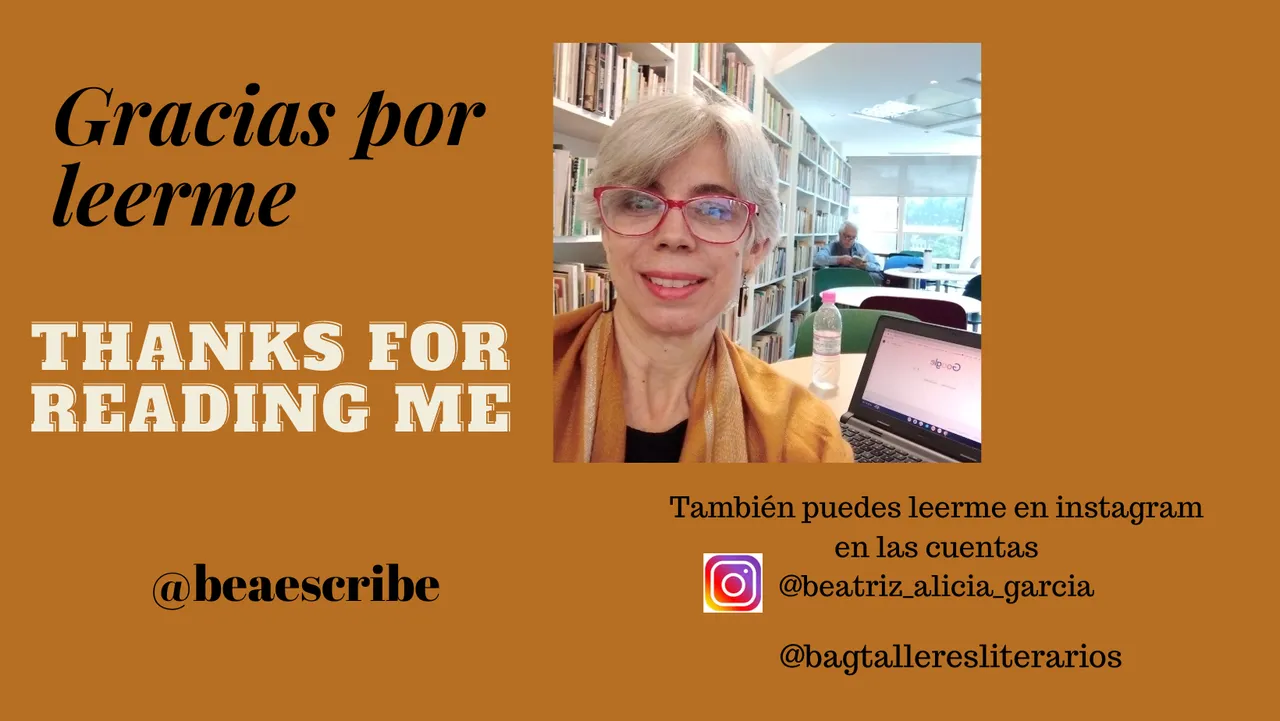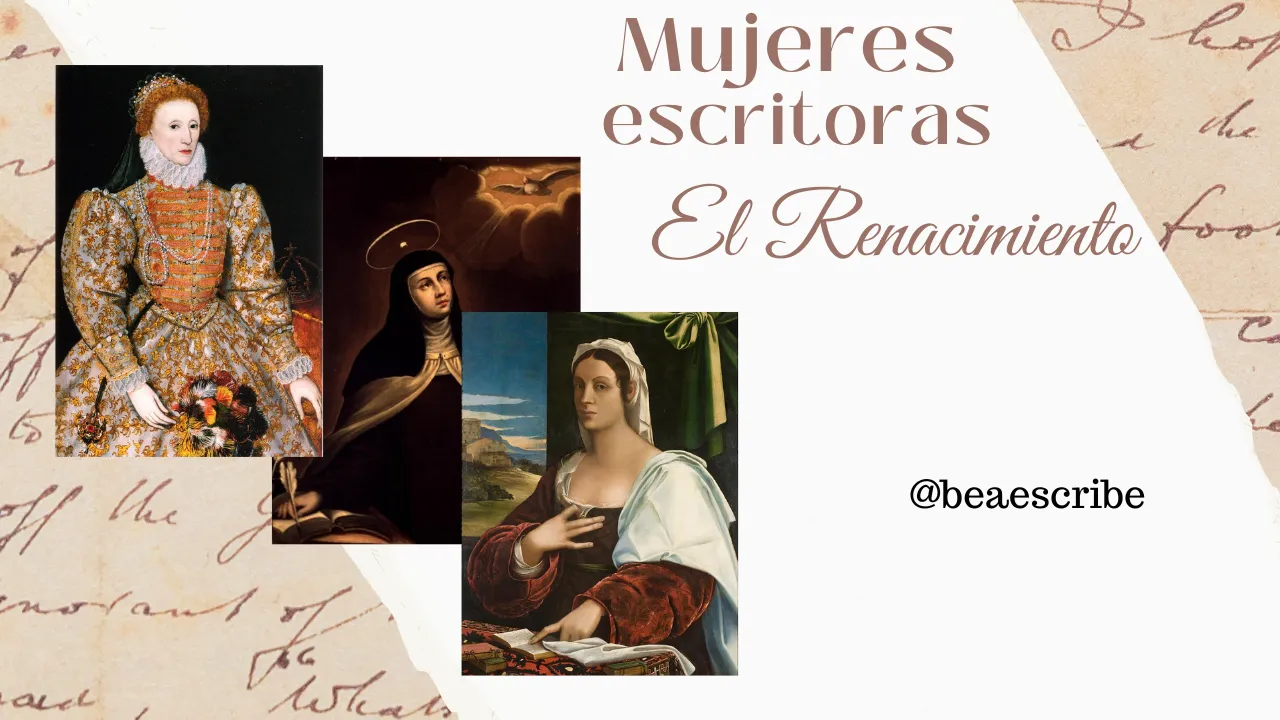
Sin duda el periodo histórico que conocemos como Renacimiento, entre el siglo XV y el XVI, es uno de los más extraordinarios que ha vivido la humanidad, pero creo firmemente que esa época de esplendor fue posible en tanto fue el resultado de un proceso de cambio que se inicia en la Edad Media, la época que la precede, o quizá incluso antes, en la Magna Grecia. El Renacimiento se caracteriza por un retorno a los ideales clásicos de la antigüedad, pero unidos al mundo de la Modernidad, en el que la ciencia y la tecnología tienen un papel fundamental. La humanidad no se iluminó de repente y salió de la oscuridad medieval.
Muchos de los grandes progresos de la ciencia y la cultura, son el crisol del encuentro de grandes mentes creativas de diversas culturas de Oriente y Occidente que se encuentran en lugares como Alejandría, Bizancio, Toledo, regiones en las que cristianos, judíos y musulmanes conviven y se enriquecen durante la Edad Media, aún en medio de conquistas, guerras, invasiones. Cristóbal Colón llega a América buscando una ruta corta para llegar a Oriente por mar y evitar a las guerras y a los moros. Marco Polo nos relata sus viajes a las tierras del Gran Khan.
Mujeres poetas del Renacimiento
Al igual que ocurrió en la Edad Media la literatura y las artes prosperan en las cortes, son los nobles, los príncipes, quienes apoyan a las grandes mentes creadoras de las ciencias y las artes, son sus mecenas. Así encontramos a los grandes pintores del quattrocento como Rafael Sanzio, Leonardo Da Vinci o Miguel Ángel Buonarroti, llamados por los papas en Roma o por algún príncipe italiano como Lorenzo “El Magnífico” (1449-1492), príncipe florentino que es considerado el gran mecenas del Renacimiento, quien acogió a varios de los grandes creadores de su tiempo. El gran poeta renacentista Poliziano vivió en la corte de los Medici. Italia fue sin duda el gran centro cultural del Renacimiento. Aunque también en Flandes, actual Bélgica, hubo importantes pintores como los hermanos Hubert y Jan Van Eyck y Pieter Brueguel (1520-69). En Holanda el pintor Hyeronimus Bosch (El Bosco) (1460-1516).
Pero también es cierto, y la historia parece haberlo olvidado, que en las cortes renacentistas europeas, hubo también mujeres creadoras, algunas de ellas de gran popularidad en aquel tiempo. En este artículo les hablaré de ellas y les compartiré algunos de sus textos. Vamos a recordarlas, que sus versos, encendidos de pasión, vuelvan a ser leídos. Acompáñame.
Vittoria Colonna

Fuente
Vittoria Colonna, marquesa de Pescara, fue una poetisa e influyente intelectual del Renacimiento italiano. Nació en Marino en abril de 1490, en una noble familia romana, que descendía de la familia ducal de Urbino. Su padre, Fabrizio Colonna, acordó su matrimonio, cuando aún era niña, con Francisco Fernando de Ávalos, noble napolitano de origen español, la pareja se casó en Ischia en 1509, y felizmente se llevaron muy bien, pero al poco tiempo de haberse casado Francisco debió partir a la guerra, a las órdenes de su suegro, para combatir a favor de España contra Francia.
Francisco fue hecho prisionero en la batalla de Rávena, en 1512, y deportado a Francia. Pero pudo regresar con vida. No tuvo la misma suerte en 1525, cuando combatió en el ejército de Carlos V y fue herido gravemente en la batalla de Pavía. Vittoria corrió a reunirse con él en Milán, pero en el camino la sorprendió la noticia de su muerte en Viterbo. El profundo dolor que sintió al perder a su amado le inspira su obra más conocida “Rimas espirituales”.
La poeta fue amiga de reconocidos escritores de la época como Pietro Bembo, Luigi Alamanni y Baltasar de Castiglione. Tuvo también una estrecha relación con reformadores, como Pietro Camesecchi, Juan de Valdés y Bernardino Ochino. Pero su más ilustre amigo fue el pintor Miguel Ángel Buonarroti, sobre quien tuvo una gran influencia. Miguel Ángel le dedicó varios de sus sonetos y la retrató en numerosos dibujos y pinturas.
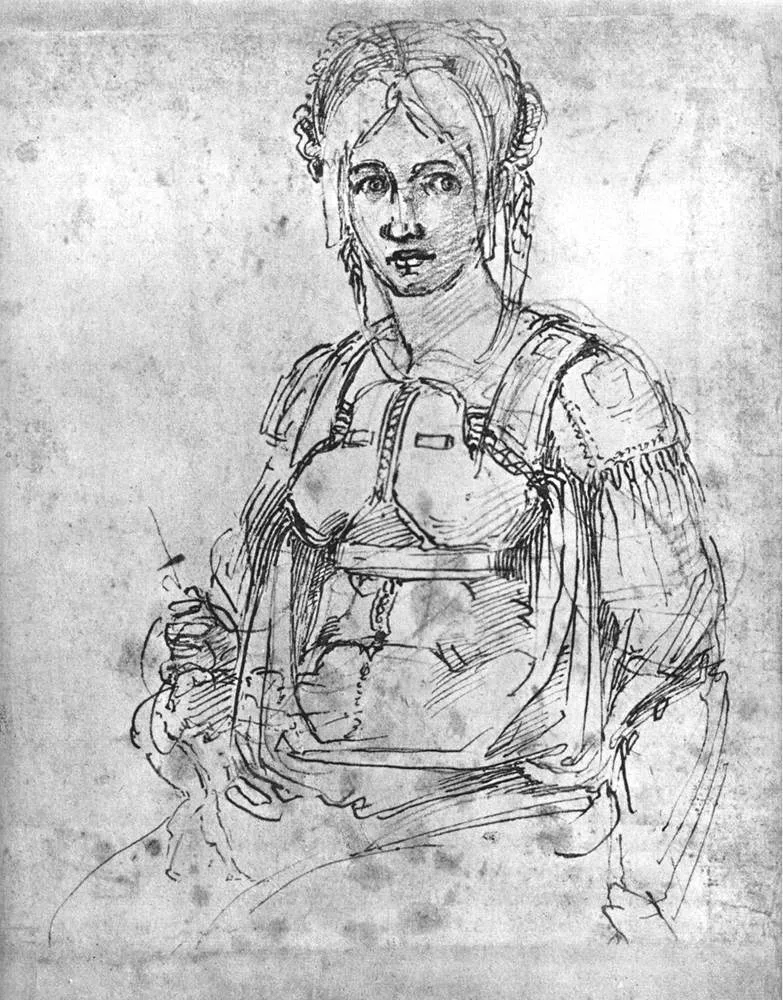
fuente dibujo Miguel Angel
Los versos de Vittoria Colonna se imprimieron por primera vez en Parma en 1538, pero poco después aparecieron nuevas ediciones: en Florencia y Venecia, respectivamente. Colonna murió en el convento de San Silvestre en Roma el 25 de febrero de 1547. Les comparto dos de sus poemas que pertenecen a “Rimas espirituales”.
SOLO ESCRIBO PARA ALIVIAR EL LLANTO
Solo escribo para aliviar el llanto
que a mi pecho alimenta únicamente
y no por añadir luz a mi sol
que dejó en tierra tan preciados restos.
Justa razón a lamentar me empuja,
mucho me duele el reducir su gloria;
con palabras más sabias y otra pluma
quitarán a la muerte otros su fama.
mi fe pura, mi ardor, m interna pena
ante todos me excuse, que es tan grave
que no la enfrentan la razón ni el tiempo.
Un amargo llorar, no un dulce canto,
no voz serena, lúgubres suspiros,
no en estilo, en dolor me dan ventaja.
Fuente: "Tres poetisas italianas del Renacimiento ", poesía Hiperión, Prólogo y traducción de Luis Martínez de Merlo, 1988)
Les comparto versión original italiana tomada de la edición de Hiperion, observen la rima que se pierde en la traducción al español.
SCRIVO SOL PER SFOGAR L' INTERNA DOGLIA
Scrivo sol per sfogar l' interna doglia,
di che si pasce il cor, ch' altro non vole,
e non per giunger lume al mio bel sole,
che lasciò in terra sì onorata spoglia.
Giusta cagione a lamentar m' invoglia;
ch´ io scemi la sua gloria assai mi dole;
per altra penna e più saggie parole
verrà chi a morte il suo gran nome toglia.
La pura fé, l' ardor, l' intensa pena
mi scusi appo ciascun, grave cotanto
che né ragion né tempo mai l' affrena.
Amaro lagrimar, non dolce canto,
foschio sospiri e non voce serena,
di stil no, ma di duol mi danno il vanto.
DE MI SOL CLARO, CON LA MUERTE CIEGO
De mi sol claro, con la muerte ciego,
aquí miro doquier las dulces huellas;
ciego no; más allá de las estrellas
arde con luz más clara y vivo fuego.
Aquí vencido de mi amante ruego,
él me mostró sus cicatrices bellas,
y yo mis labios estampaba en ellas,
y las bañaba de mi llanto el riego.
Sus brillantes victorias me contaba
y el modo y la ocasión con la serena
faz con que abría la contienda brava;
de llanto rompo en dolorosa vena,
pues lo mismo que un tiempo me alegraba
me causa ahora inconsolable pena.
Fuente datos biograficos Vittoria Colonna
Gampara Stampa
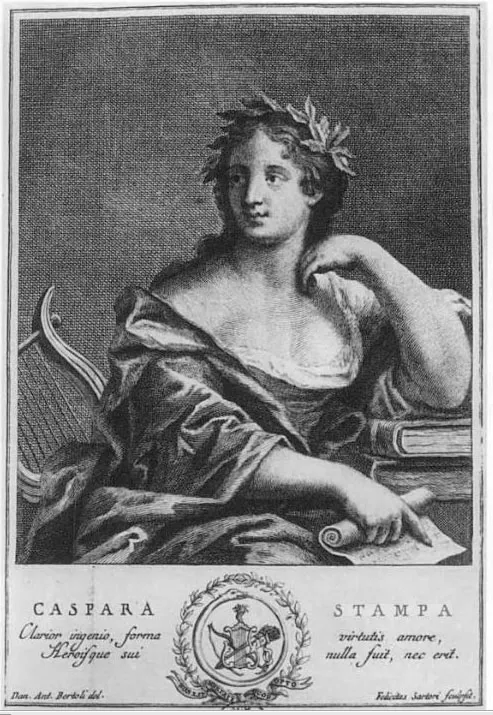
Fuente
Otra destacada poeta italiana del Renacimiento es Gampara Stampa (Padua, 1523-Venecia, 1554). Sobre la vida de esta poeta italiana se tienen pocos datos ciertos, debido a su temprana muerte se ha configurado una leyenda, a partir de sus versos. Su hermana Cassandra publicó póstumamente un compendio de su poesía bajo el título “Rime” el mismo año de su muerte, que sólo tuvo una edición, a pesar de que en vida sus canciones habían alcanzado popularidad. La colección de 1554 reúne 310 composiciones (sonetos, madrigales, sextinas, canciones y capitoli).
Su obra no se reeditó y fue olvidada, pero doscientos años después, en 1738, se realiza una segunda edición que logra alcanzar inclusive cierto éxito internacional, más allá de las fronteras de Italia. El poeta checo Rainer Maria Rilke le dedica unos versos en su Primera Elegía del Duino. Les comparto dos de sus poemas, junto al original italiano. En ellos elogia al amado, resalta sus cualidades y expresa su gran amor hacia él. El amor es el gran tema de la poesía renacentista. Pero el amor y la pasión son también la fuente de grandes sufrimientos. Este tema se reitera en los poetas de la época tanto hombres como mujeres.
5
A menudo comparo a mi señor
con el cielo. Es el sol su bello rostro;
las estrellas, sus ojos; y cuando habla
suena la música del dios de Delos.
La tempestad, la lluvia, el trueno, el hielo
son su cólera, cuando se enfurece;
el tiempo calmo y claro es cuando quiere
rasgar, amable, el velo de su furia.
La primavera, el retoñar de flores,
es cuando hace aflorar mis esperanzas,
prometiendo que así serán mis días.
Llega el horrible invierno cuando cambia
y amenaza con irse y olvidarme,
privarme de mis bienes más preciados.
5 // Io assimiglio il mio signor al cielo/ meco sovente. Il suo bel viso è ‘l sole;/ gli occhi, le stelle; e ‘l suon de le parole/ è l’armonia, che fa ‘l signor di Delo.// Le tempeste, le piogge, i tuoni e ‘l gelo/ son i suoi sdegni, quando irar si suole;/ le bonacce e ‘l sereno è quando vuole/ squarciar de l’ire sue benigno il velo.// La primavera e ‘l germogliar de’ fiori/ è quando ei fa fiorir la mia speranza,/ promettendo tenermi in questo stato./ L’orrido verno è poi, quando cangiato/ minaccia di mutar pensieri e stanza,/ spogliata me de’ miei più ricchi onori.
7
Damas, quien quiera ver a mi señor
busque un hombre de aspecto hermoso y dulce,
en años joven y en sapiencia viejo,
la imagen de la gloria y el valor:
con el cabello rubio y tez lozana,
de estatura alta y con espaldas anchas,
y, en conclusión, perfecto en cada acto,
salvo un poco (¡ay!) cruel en el amor.
Y que busque después quien quiera verme
una mujer que muestra en su semblante
la imagen de la muerte y el martirio,
hogar de la lealtad firme y constante,
una mujer que llora, arde y suspira,
sin lograr que su amado cruel se apiade.
7 // Chi vuol conoscer, donne, il mio signore,/ miri un signor di vago e dolce aspetto,/ giovane d’anni e vecchio d’intelletto,/ imagin de la gloria e del valore:// di pelo biondo, e di vivo colore,/ di persona alta e spazioso petto,/ e finalmente in ogni opra perfetto,/ fuor ch’un poco (oimè lassa!) empio in amore.// E chi vuol poi conoscer me, rimiri/ una donna in effetti ed in sembiante/ imagin de la morte e de’ martìri,// un albergo di fé salda e costante,/ una, che, perché pianga, arda e sospiri,/ non fa pietoso il suo crudel amante.
Fuente poemas Gampara Stampa
Fuente datos biograficos Gampara Stampa
Leonor Centellas
Leonor Centellas, marquesa de Cotrone, nace en 1430, en los albores del Renacimiento. Su nombre de soltera fue Leonor Boil, como ocurre con muchas de las poetas de su época, se sabe poco acerca de su vida, salvo lo que expresa en su obra poética. Fue una de las damas de compañía de Isabel La Católica, se casó en primeras nupcias con Luis Cornell y tras su muerte, se casó nuevamente con Antonio de Centelles, Marqués de Cotrone, quien también formaba parte del personal de la corte.
Se sabe, por canciones de Juan de la Encina, que su primer esposo y su hijo fueron prisioneros de guerra de los turcos y Leonor fue ante el papa en Roma a pedir apoyo para su liberación, pero fue en vano, su esposo y su hijo murieron cautivos. La propia Leonor también escribe canciones al respecto, que son publicadas en el Cancionero General. Ella gana renombre en unas fiestas reales convocadas por los reyes católicos en Valladolid, en 1475, al llamar la atención de la multitud, las mangas de su vestido estaban decoradas con unas ondas que se asemejaban al fuego, mientras cantaba sus poemas expresando su ardiente y pasional amor hacia el Marqués. Esto cautivó al pueblo e inició su fama en el mundo de la literatura española. Te comparto imagen de versos de Leonor Centellas del Cancionero General, que he tomado de Cervantes Virtual.
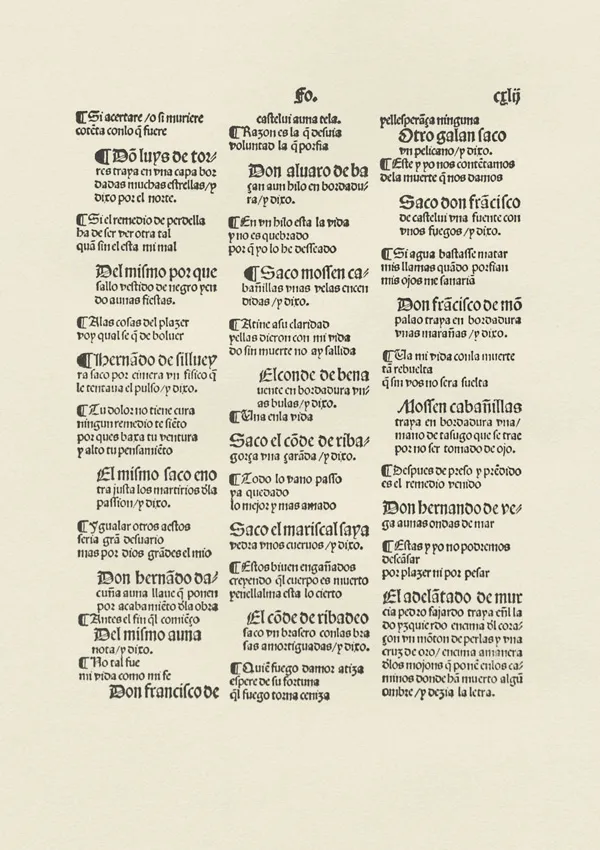
Fuente versos Leonor Centellas
Fuente datos biográficos Leonor Centellas
Elizabeth I de Inglaterra
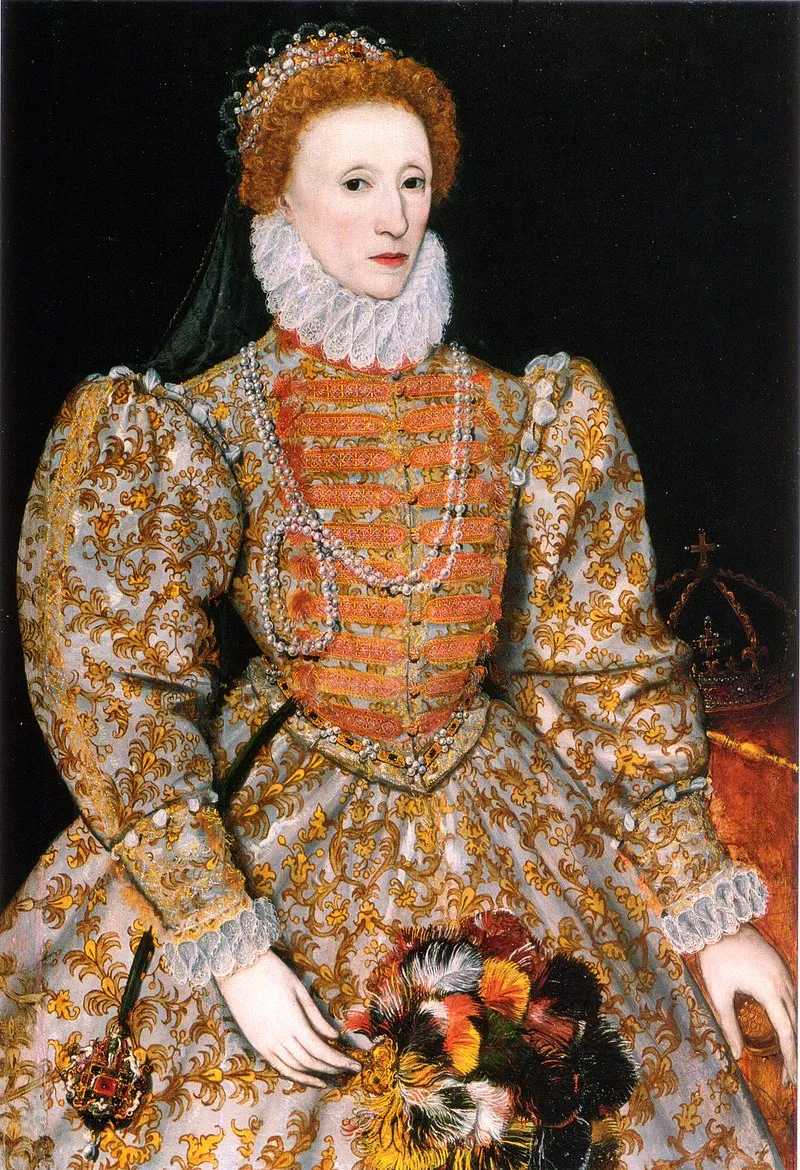
Fuente
Seguramente has leído o escuchado acerca de la “Reina Virgen”, Elizabeth I de Inglaterra, nació en Greenwich en 1533, hija de Enrique VIII y su segunda esposa, Ana Bolena. Infelizmente, cuando Elizabeth tenía sólo dos años y medio de edad su madre es ejecutada y el matrimonio entre sus padres es anulado y ella es declarada ilegítima. Su medio hermano Eduardo VI gobernó hasta su muerte en 1553, legando la corona a Lady Jane Grey, dejando a un lado las reclamaciones de sus dos medio hermanas, María, la católica, y Elisabeth. El deseo de Eduardo en su testamento no fue respetado y María se convirtió en reina, destituyendo a Lady Jane Grey.
Durante el reinado de María, Elizabeth fue encarcelada durante casi un año acusada de apoyar a los rebeldes protestantes.Sin embargo, a la muerte de María en 1558 le sucedió Elizabeth en el trono, contando con el apoyo de algunos buenos consejeros. Luego de llegar al trono se esperaba que se casara y le diera un heredero a la corona, pero a pesar de tener algunos noviazgos, no se casó, reinó hasta su muerte en 1603. Entre los grandes hechos que protagonizó estuve el haber vencido a la llamada “armada invencible” española. Fue la quinta y última monarca de la dinastía Tudor.
Lo que tal vez no sabías, es que Elizabeth I, al igual que otras damas nobles de su tiempo, escribió poemas de amor. Te comparto poema que se le atribuye a esta reina legendaria:
Sufro sin enseñar mi descontento,
Y amo, aunque deba aparentar odio.
No me atrevo a expresar mis sentimientos,
Parezco muda, aunque por dentro hablo.
Soy y no soy, en llamas me congelo,
Pues he dejado de ser yo, no soy más mía.
Este dolor es como mi sombra,
Me sigue al vuelo y vuela si la sigo,
Me acompaña y hace lo que hago,
Y me aflige su pena, que comparto.
No hay manera de alejarla de mi pecho
Hasta que el fin de las cosas la destierre.
Insúflame una pasión más tierna
Pues blanda soy, nieve derretida,
O sé cruel, amor, y así sé amable:
Deja que flote o permite que me hunda.
Hazme vivir con un dulce deleite,
O déjame morir para que olvide que he amado.
Fuente datos biograficos Elizabeth I
Louise Labé
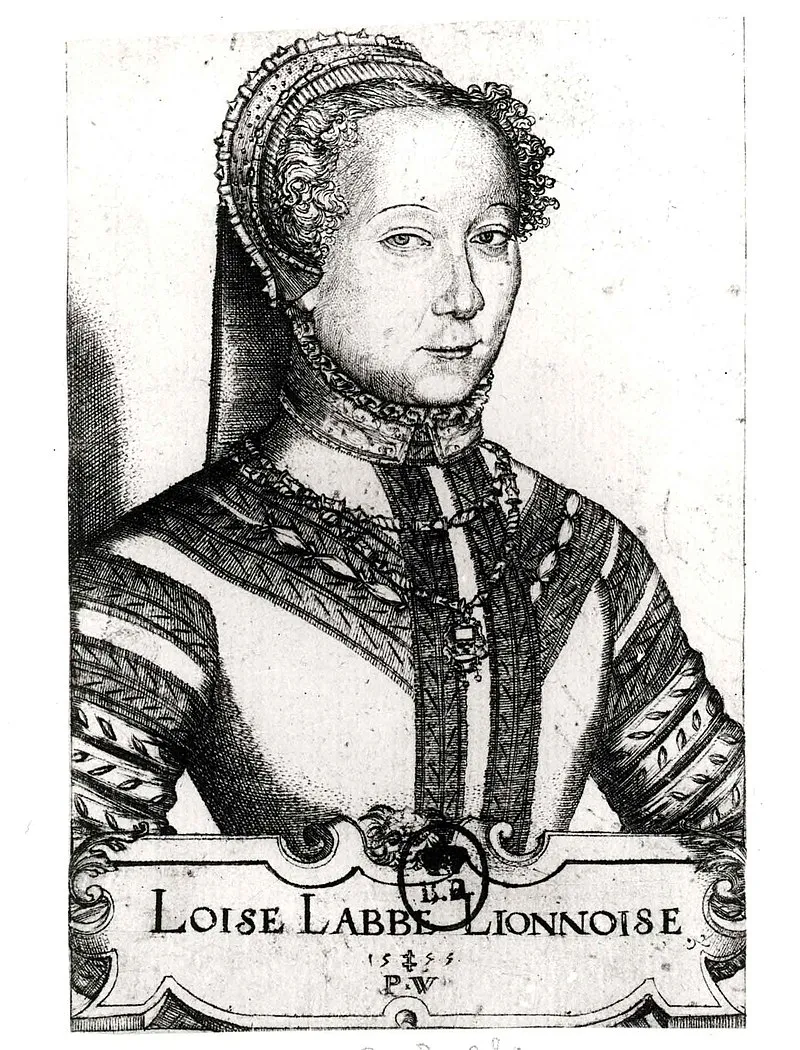
Fuente
La poeta francesa nació en Lyon en 1525, su nombre de soltera fue Louise Charly. En su época se la conoció como "la Bella Cordelera" por ser hija de un rico cordelero y así también esposa de otro miembro del gremio el fabricante de ropa, Ennemond Perrin. Colaboró con algunos de los escritores de su tiempo, entre ellos Olivier de Magny y Jacques Pelletier du Mans, quienes se reunían en el taller del impresor Jean de Tournes. Era instruida en latín, italiano y música y conformó en su casa, gracias a la fortuna de su marido, una amplia biblioteca en varios idiomas. En 1564 una epidemia diezmó a sus amigos y ella misma pereció en 1566. Fue enterrada en una propiedad suya a las afueras de Lyon. Les comparto dos de sus textos, en los cuales defiende su derecho a amar, su pasión.
BELLO MIRAR OSCURO Y EXTRAVIADO
Bello mirar oscuro y extraviado,
cálido suspirar, llantos vertidos,
días de luz en vano amanecidos,
negras noches que en vano se anhelaron;
triste plañir, deseos obstinados,
derroches de dolor, tiempo perdido,
muertes mil que mil redes me han tendido,
males que contra mí se han destinado.
Risa, frente, cabellos, manos, dedos,
laúd quejoso, voz, arco, vïola:
¡tantas llamas que queman a una sola
mujer! Me quejo a ti: con tantos fuegos
tanto lugar del corazón me inflamas
y ninguna centella a ti te alcanza.
Fuente poema
NO ME CULPÉIS, DAMAS, SI HUBE AMADO
No me culpéis, Damas, si hube amado:
si arder en mí sentí uno y mil cirios,
mil trabajos dañinos, mil delirios:
si el tiempo yo perdí al haber llorado,
que no acabe mi nombre censurado.
Si débil fui, mis penas son presidios.
No agreguéis hiel a lo que son martirios:
sabed que Amor, aun no convocado,
sin que Vulcano vuestro ardor excuse,
sin que a un Adonis la belleza acuse,
a vos pudiera herir, enamoradas:
y más que a mí, con ocasión más leve,
y con pasión más fuerte y más aleve.
Guardaos de no ser más desdichadas.
Fuente poema
fuente datos biograficos Louise Labe
Santa Teresa de Jesús
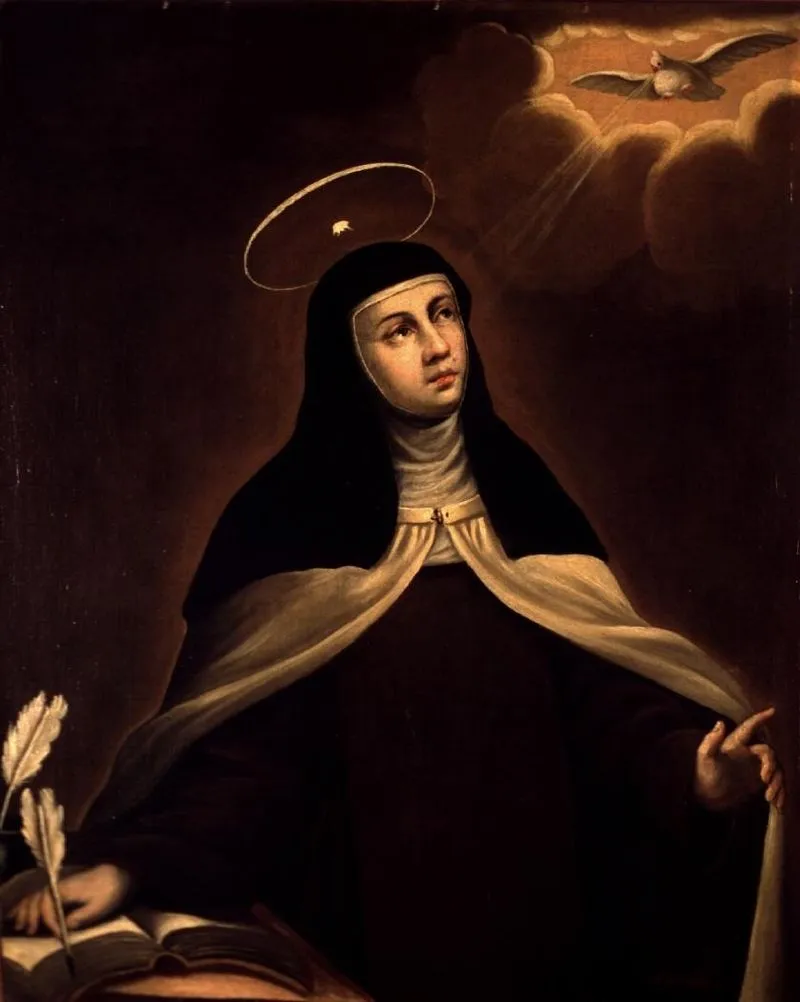
Fuente
Dejó para el final a Santa Teresa de Jesús (1515-1582), la gran poeta mística española del Siglo de Oro, porque sus pasiones no fueron terrenales, su gran pasión fue entregada a Dios. También es conocida como Santa Teresa de Ávila, por haber nacido en esa ciudad. El nombre que recibió de sus padres fue Teresa Sánchez de Cepeda Dávila y Ahumada. Fundó la Orden de las Carmelitas Descalzas, junto con san Juan de la Cruz, de quien fue amiga, es considerada la cumbre de la mística experimental cristiana y así también una de las grandes maestras de la vida espiritual de la Iglesia.
Santa Teresa escribió además de su poesía lírica, dos importantes obras en prosa “Camino de Perfección” (1562-1564) y “Conceptos del amor de Dios y Castillo interior o Las moradas”. Les comparto su poema más conocido en el que expresa su más alta búsqueda espiritual, en la que el alma busca a Dios con tanto fervor que anhela estar en su presencia. Toda su vida estuvo entregada a esa honda búsqueda.
VIVO SIN VIVIR EN MÍ
Vivo sin vivir en mí,
y tan alta vida espero,
que muero porque no muero.
Vivo ya fuera de mí,
después que muero de amor;
porque vivo en el Señor,
que me quiso para sí:
cuando el corazón le di
puso en él este letrero,
que muero porque no muero.
Esta divina prisión,
del amor en que yo vivo,
ha hecho a Dios mi cautivo,
y libre mi corazón;
y causa en mí tal pasión
ver a Dios mi prisionero,
que muero porque no muero.
¡Ay, qué larga es esta vida!
¡Qué duros estos destierros,
esta cárcel, estos hierros
en que el alma está metida!
Solo esperar la salida
me causa dolor tan fiero,
que muero porque no muero.
¡Ay, qué vida tan amarga
do no se goza el Señor!
Porque si es dulce el amor,
no lo es la esperanza larga:
quíteme Dios esta carga,
más pesada que el acero,
que muero porque no muero.
Solo con la confianza
vivo de que he de morir,
porque muriendo el vivir
me asegura mi esperanza;
muerte do el vivir se alcanza,
no te tardes, que te espero,
que muero porque no muero.
Mira que el amor es fuerte;
vida, no me seas molesta,
mira que solo me resta,
para ganarte perderte.
Venga ya la dulce muerte,
el morir venga ligero
que muero porque no muero.
Aquella vida de arriba,
que es la vida verdadera,
hasta que esta vida muera,
no se goza estando viva:
muerte, no me seas esquiva;
viva muriendo primero,
que muero porque no muero.
Vida, ¿qué puedo yo darle
a mi Dios que vive en mí,
si no es el perderte a ti,
para merecer ganarle?
Quiero muriendo alcanzarle,
pues tanto a mi Amado quiero,
que muero porque no muero.
Fuente del poema: https://teresavila.com/poema/1-vivo-sin-vivir-en-mi/
Fuente datos biográficos
https://www.cervantesvirtual.com/portales/santa_teresa_de_jesus/autora_biografia/
Todos los retratos son de Dominio Público y está indicada su fuente.
La traducción al inglés fue realizada con ayuda de la página deepl.com
English version
The historical period we know as the Renaissance, between the 15th and 16th centuries, is undoubtedly one of the most extraordinary that humanity has ever experienced, but I firmly believe that this period of splendor was possible because it was the result of a process of change that began in the Middle Ages, the period that preceded it, or perhaps even before, in Magna Graecia. The Renaissance is characterized by a return to the classical ideals of antiquity, but united with the world of Modernity, in which science and technology play a fundamental role. Humanity did not suddenly light up and emerge from medieval darkness.
Many of the great advances in science and culture are the melting pot of the meeting of great creative minds from different cultures of the East and West that are found in places like Alexandria, Byzantium, Toledo, regions where Christians, Jews and Muslims coexist and enrich themselves during the Middle Ages, even in the midst of conquests, wars and invasions. Christopher Columbus arrives in America looking for a short route to reach the Orient by sea and avoid the wars and the Moors. Marco Polo tells of his travels to the lands of the Great Khan.
Women poets of the Renaissance
As in the Middle Ages, literature and the arts flourished in the courts, and it was the nobles, the princes, who supported the great creative minds of the sciences and the arts, they were their patrons. Thus we find the great painters of the quattrocento like Rafael Sanzio, Leonardo Da Vinci or Michelangelo Buonarroti, called by the popes in Rome or by some Italian prince like Lorenzo "The Magnificent" (1449-1492), Florentine prince who is considered the great patron of the Renaissance, who welcomed several of the great creators of his time. The great Renaissance poet Poliziano lived at the Medici court. Italy was undoubtedly the great cultural center of the Renaissance. Although also in Flanders, now Belgium, there were important painters such as the brothers Hubert and Jan Van Eyck and Pieter Brueguel (1520-69). In Holland the painter Hyeronimus Bosch (Hieronymus Bosch) (1460-1516).
But it is also true, and history seems to have forgotten it, that in the European Renaissance courts, there were also women creators, some of them very popular at the time. In this article I will tell you about them and share with you some of their texts. Let's remember them, let their verses, on fire with passion, be read again. Join me.
Vittoria Colonna

Source
Vittoria Colonna, Marchioness of Pescara, was a poetess and influential intellectual of the Italian Renaissance. She was born in Marino in April 1490, into a noble Roman family, descended from the ducal family of Urbino. Her father, Fabrizio Colonna, arranged her marriage, when she was still a child, with Francisco Fernando de Avalos, a Neapolitan nobleman of Spanish origin, the couple married in Ischia in 1509, and happily got along very well, but soon after their marriage Francisco had to leave for war, under the orders of his father-in-law, to fight for Spain against France.
Francis was taken prisoner in the battle of Ravenna in 1512 and deported to France. But he was able to return alive. He did not have the same luck in 1525, when he fought in the army of Charles V and was seriously wounded in the battle of Pavia. Vittoria rushed to join him in Milan, but on the way she was surprised by the news of his death in Viterbo. The deep sorrow she felt at the loss of her beloved inspired her most famous work "Spiritual Rhymes".
The poet was a friend of renowned writers of the time such as Pietro Bembo, Luigi Alamanni and Baltasar de Castiglione. She also had a close relationship with reformers such as Pietro Camesecchi, Juan de Valdés and Bernardino Ochino. But his most illustrious friend was the painter Michelangelo Buonarroti, on whom he had a great influence. Michelangelo dedicated several of his sonnets to her and portrayed her in numerous drawings and paintings.

Source
Vittoria Colonna's verses were first printed in Parma in 1538, but soon after new editions appeared: in Florence and Venice, respectively. Colonna died in the convent of San Silvestro in Rome on February 25, 1547. I share with you two of his poems that belong to "Spiritual Rhymes".
I ONLY WRITE TO RELIEVE THE TEARS
I only write to soothe the tears
that only feeds my chest
and not to add light to my sun
that left such precious remains on earth.
Just reason pushes me to regret,
it pains me much to reduce its glory;
With wiser words and another pen
others will take away his fame in death.
my pure faith, my ardor, my inner sorrow
before all, which is so grave that neither reason nor time
that neither reason nor time can stand against it.
Bitter weeping, not sweet singing,
not a serene voice, mournful sighs,
not in style, in pain give me an advantage.
Source: "Tres poetisas italianas del Renacimiento", Hiperión poetry, Prologue and translation by Luis Martínez de Merlo, 1988).
I share with you the original Italian version taken from the Hiperion edition, note the rhyme that is lost in translation.
SCRIVO SOL PER SFOGAR L' INTERNA DOGLIA
Scrivo sol per sfogar l' interna doglia,
di che si pasce il cor, ch' altro non vole,
e non per giunger lume al mio bel sole,
che lasciò in terra sì onorata spoglia.
Giusta cagione a lamentar m' invoglia;
ch´ io scemi la sua gloria assai mi dole;
per altra penna e più saggie parole
verrà chi a morte il suo gran nome toglia.
La pura fé, l' ardor, l' intensa pena
mi scusi appo ciascun, grave cotanto
che né ragion né tempo mai l' affrena.
Amaro lagrimar, non dolce canto,
foschio sospiri e non voce serena,
di stil no, ma di duol mi danno il vanto.
OF MY CLEAR SUN, WITH BLIND DEATH
Of my clear sun, with blind death,
here I look everywhere at the sweet traces;
not blind; beyond the stars
burns with clearer light and livelier fire.
Here vanquished from my lover's plea,
he showed me his beautiful scars,
and I stamped my lips on them,
And watered them with my tears.
His shining victories he told me
and the manner and the occasion with the serene
with the serene face with which he opened the fierce contest;
of weeping I break into a painful vein,
for the same thing that once made me happy
now causes me inconsolable grief.
Fuente datos biograficos Vittoria Colonna
Gampara Stampa

Fuente
Another outstanding Italian poet of the Renaissance is Gampara Stampa (Padua, 1523-Venice, 1554). There is little certain information about the life of this Italian poet, but due to her early death, a legend has been formed based on her verses. Her sister Cassandra posthumously published a compendium of her poetry under the title "Rime" the same year of her death, which had only one edition, although in her lifetime her songs had achieved popularity. The collection of 1554 gathers 310 compositions (sonnets, madrigals, sextinas, songs and capitoli).
His work was not republished and was forgotten, but two hundred years later, in 1738, a second edition was published, which even achieved some international success, beyond the borders of Italy. The Czech poet Rainer Maria Rilke dedicated some verses to it in his First Duino Elegy. I share with you two of his poems, together with the Italian original. In them he praises the beloved, highlights his qualities and expresses his great love for him. Love is the great theme of Renaissance poetry. But love and passion are also the source of great suffering. This theme is reiterated in the poets of the time, both men and women.
5
I often compare my lord
to the sky. The sun is his beautiful face;
the stars, his eyes; and when he speaks
sounds the music of the god of Delos.
The tempest, the rain, the thunder, the ice
are his anger, when he rages;
calm and clear weather is when he wants
to tear, kindly, the veil of his fury.
Spring, the blooming of flowers,
is when it brings my hopes to the surface,
promising that this is how my days will be.
The horrible winter comes when it changes
and threatens to leave and forget me,
to deprive me of my most precious possessions.
5 // Io assimiglio il mio signor al cielo/ meco sovente. Il suo bel viso è ‘l sole;/ gli occhi, le stelle; e ‘l suon de le parole/ è l’armonia, che fa ‘l signor di Delo.// Le tempeste, le piogge, i tuoni e ‘l gelo/ son i suoi sdegni, quando irar si suole;/ le bonacce e ‘l sereno è quando vuole/ squarciar de l’ire sue benigno il velo.// La primavera e ‘l germogliar de’ fiori/ è quando ei fa fiorir la mia speranza,/ promettendo tenermi in questo stato./ L’orrido verno è poi, quando cangiato/ minaccia di mutar pensieri e stanza,/ spogliata me de’ miei più ricchi onori.
7
Ladies, whoever wants to see my lord
look for a man of fair looks and sweetness,
in years young and in wisdom old,
the image of glory and valor:
With blond hair and luxuriant complexion,
tall in stature and broad-backed,
and, in conclusion, perfect in every act,
except a little (alas!) cruel in love.
And let him seek after me who would see me
a woman who shows in her countenance
the image of death and martyrdom,
home of firm and constant loyalty,
a woman who cries, burns and sighs,
without getting her cruel beloved to take pity.
7 // Chi vuol conoscer, donne, il mio signore,/ miri un signor di vago e dolce aspetto,/ giovane d'anni e vecchio d'intelletto,/ imagin de la gloria e del valore:// di pelo biondo, e di vivo colore,/ di persona alta e spazioso petto,/ e finalmente in ogni opra perfetto,/ fuor ch'un poco (oimè lassa! ) empio in amore.// E chi vuol poi conoscer me, rimiri/ una donna in effetti ed in sembiante/ imagin de la morte e de' martìri,// un albergo di fé salda e costante,/ una, che, perché pianga, arda e sospiri,/ non fa pietoso il suo crudel amante.
Source Gampara Stampa's poems
Source Gampara Stampa's biography
Leonor Centellas
Leonor Centellas, Marquise of Cotrone, was born in 1430, at the dawn of the Renaissance. Her maiden name was Leonor Boil, as with many of the poets of her time, little is known about her life, except what she expresses in her poetic work. She was one of the ladies-in-waiting of Isabella the Catholic, married in first marriage to Luis Cornell and after his death, married again to Antonio de Centelles, Marquis of Cotrone, who was also part of the court staff.
It is known, by songs of Juan de la Encina, that her first husband and her son were prisoners of war of the Turks and Leonor went to the pope in Rome to ask for support for their liberation, but it was in vain, her husband and her son died captive. Leonor herself also writes songs about it, which are published in the Cancionero General. She gained renown in a royal feast convened by the Catholic kings in Valladolid, in 1475, when she attracted the attention of the crowd, the sleeves of her dress were decorated with waves that resembled fire, while she sang her poems expressing her ardent and passionate love for the Marquis. This captivated the people and initiated her fame in the world of Spanish literature. I share with you an image of Leonor Centellas' verses from the Cancionero General, which I have taken from Cervantes Virtual.

Source
Source Leonor Centellas biography
Elizabeth I de Inglaterra

Fuente
You have probably read or heard about the "Virgin Queen", Elizabeth I of England, born in Greenwich in 1533, daughter of Henry VIII and his second wife, Anne Boleyn. Unfortunately, when Elizabeth was only two and a half years old her mother was executed and the marriage between her parents was annulled and she was declared illegitimate. Her half-brother Edward VI ruled until his death in 1553, bequeathing the crown to Lady Jane Grey, setting aside the claims of his two half-sisters, Mary, the Catholic, and Elizabeth. Edward's wish in his will was not respected and Mary became queen, deposing Lady Jane Grey.
During Mary's reign, Elizabeth was imprisoned for almost a year accused of supporting the Protestant rebels.However, on Mary's death in 1558 she was succeeded by Elizabeth on the throne, having the support of some good advisors. After reaching the throne was expected to marry and give him an heir to the crown, but despite having some courtships, he did not marry, he reigned until his death in 1603. Among the great deeds she carried out was the defeat of the so-called "invincible Spanish armada". She was the fifth and last monarch of the Tudor dynasty.
What you may not know is that Elizabeth I, like other noble ladies of her time, wrote love poems. I share with you a poem attributed to this legendary queen:
I suffer without showing my discontent,
And I love, even if I must pretend to hate.
I dare not express my feelings,
I seem mute, though inside I speak.
I am and I am not, in flames I freeze,
For I am no longer me, I am no longer mine.
This pain is like my shadow,
It follows me in flight and flies if I follow it,
It accompanies me and does what I do,
And I grieve for its sorrow, which I share.
There's no way to drive it from my breast
Till the end of things banish her.
Inflame me with a tenderer passion
For I am soft, melting snow,
Or be cruel, love, and so be kind:
Let me float or let me sink.
Make me live with sweet delight,
Or let me die that I may forget that I have loved.
Source Queen Elizabeth I biography
Louise Labé

Fuente
The French poet was born in Lyon in 1525, her maiden name was Louise Charly. In her time she was known as "La Belle Cordelier" for being the daughter of a wealthy cordwainer and thus also the wife of another member of the guild, the clothing manufacturer Ennemond Perrin. She collaborated with some of the writers of her time, among them Olivier de Magny and Jacques Pelletier du Mans, who met in the workshop of the printer Jean de Tournes. She was educated in Latin, Italian and music and built up in her home, thanks to her husband's fortune, an extensive library in several languages. In 1564 an epidemic decimated her friends and she herself perished in 1566. She was buried in a property of hers on the outskirts of Lyon. I share with you two of her texts, in which she defends her right to love, her passion.
BEAUTIFUL DARK AND LOST LOOK
Beautiful dark and lost look,
warm sighing, tears poured out,
days of light in vain dawned,
black nights longed for in vain;
sad plañir, obstinate desires,
wastes of pain, lost time,
deaths a thousand deaths that a thousand nets have spread for me,
evils that have been destined against me.
Laughter, forehead, hair, hands, fingers,
complaining lute, voice, bow, viola:
so many flames that burn a single woman!
woman! I complain to you: with so many fires
so much place of the heart you inflame me
and no spark reaches you.
Source
BLAME ME NOT, LADIES, IF I HAVE LOVED
Do not blame me, ladies, if I have loved:
if I felt one and a thousand candles burning in me,
a thousand harmful labors, a thousand deliriums:
if time I lost in having wept,
may my name not end up censured.
If I was weak, my sorrows are prisons.
Do not add gall to what are martyrdoms:
Know that Love, not yet summoned,
without Vulcan your ardor excuses,
without an Adonis, without beauty's accusing Adonis,
I could hurt you, lovers:
And more than me, with lighter occasion,
and with a stronger and more joyous passion.
Beware lest you be more wretched.
Poem Source
Source Louise Labe's biography
Santa Teresa de Jesús

Fuente
He left for last St. Teresa of Jesus (1515-1582), the great Spanish mystic poet of the Golden Age, because her passions were not earthly, her great passion was given to God. She is also known as Saint Teresa of Avila, because she was born in that city. The name she received from her parents was Teresa Sánchez de Cepeda Dávila y Ahumada. She founded the Order of the Discalced Carmelites, together with St. John of the Cross, of whom she was a friend. She is considered the summit of Christian experimental mysticism and also one of the great masters of the spiritual life of the Church.
St. Teresa wrote in addition to her lyrical poetry, two important prose works "Camino de Perfección" (1562-1564) and "Conceptos del amor de Dios y Castillo interior o Las moradas". I share with you his best known poem in which he expresses his highest spiritual quest, in which the soul seeks God with such fervor that it longs to be in his presence. His whole life was devoted to this deep search.
I LIVE WITHOUT LIVING IN ME
I live without living in me,
and such a high life I hope for,
that I die because I do not die.
I live outside of myself,
after I die of love;
for I live in the Lord,
who wanted me for himself:
when I gave him my heart
he put this sign on it,
that I die because I do not die.
This divine prison
of the love in which I live,
has made God my captive,
and my heart free;
and it causes in me such passion
to see God my prisoner,
that I die because I do not die.
Oh, how long is this life!
How hard these banishments,
this prison, these irons
in which the soul is trapped!
Just waiting for the way out
causes me such fierce pain
that I die because I don't die.
Oh, what a bitter life
where the Lord does not rejoice!
For if love is sweet
long hope is not:
God take this burden from me,
heavier than steel,
I die because I do not die.
Only with the confidence
I live in the knowledge that I shall die,
because by dying I live
assures me of my hope;
death where living is attained,
do not delay, I wait for you,
I die because I do not die.
See that love is strong;
life, don't be a bother to me,
see that it only remains for me
to win you, to lose you.
Let sweet death come now,
let death come lightly
I die because I do not die.
That life from above
that is the true life,
until this life dies,
is not enjoyed while alive:
death, do not be elusive to me;
live by dying first,
that I die because I die not.
Life, what can I give
to my God who lives in me
if it is not to lose you,
to deserve to win Him?
I want to reach Him by dying,
for I love my Beloved so much,
that I die because I do not die.
poem source
Source biography
All portraits are Public Domain and their source is indicated.
The English translation was made on the deepl.com website.
